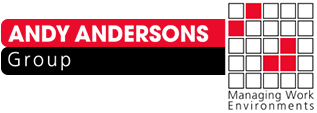-
admin@andyandersons.net.au
Send mail
-
Call Anytime (03) 9988 1228
-
Unit 2/44-48 Lock Ave,
Werribee VIC 3030, Australia -
- Welcome to our Andy Andersons Group!

At Andy Andersons Group, we understand the critical importance of maintaining a sterile environment in medical facilities. Cross-contamination can lead to severe health consequences, including hospital-acquired infections (HAIs) and the spread of resistant pathogens. Here, we share best practices for cleaning medical equipment to prevent cross-contamination and ensure patient safety.
Understanding Cross-Contamination
Cross-contamination occurs when harmful microorganisms are transferred from one object to another, potentially causing infections. In medical settings, where equipment is frequently reused, stringent cleaning protocols are essential to minimize this risk.
Step-by-Step Cleaning Process
- Pre-Cleaning: Initial Removal of Debris
Before thorough cleaning, remove any visible debris and organic material from medical equipment. Use disposable wipes or a soft brush and detergent solution. This step is crucial because organic matter can shield pathogens, making subsequent disinfection less effective.
- Disassembly: Accessing All Surfaces
Disassemble equipment as per the manufacturer’s instructions to ensure that all surfaces, including crevices and internal parts, are accessible for cleaning. Proper disassembly prevents pathogens from hiding in hard-to-reach areas.
- Cleaning: Detailed Scrubbing
Immerse the equipment parts in a detergent solution. Use a brush to scrub all surfaces meticulously. Ultrasonic cleaners can be particularly effective for items with complex geometries. Rinse thoroughly with clean water to remove all detergent residues, which can inactivate disinfectants.
- Disinfection: Killing Remaining Pathogens
After cleaning, apply an appropriate disinfectant. Follow the manufacturer’s guidelines for contact time to ensure efficacy. High-level disinfectants are recommended for critical equipment that comes into contact with sterile body areas. Ensure all parts are fully immersed or adequately wiped down, and allow the disinfectant to dry naturally.
- Rinsing and Drying: Eliminating Residual Chemicals
Rinse the equipment with sterile or distilled water to remove any disinfectant residues. Dry using a lint-free cloth or air drying in a clean, contaminant-free environment. This step is essential to prevent chemical residues from causing skin irritation or other adverse effects on patients.
Additional Best Practices
Use Personal Protective Equipment (PPE)
Wear appropriate PPE, including gloves, gowns, and masks, to protect yourself and prevent contamination of clean equipment.
Implement Color-Coded Cleaning Tools
Use color-coded cleaning tools to differentiate between those used for cleaning different areas and equipment types. This system helps prevent cross-contamination between non-critical and critical items.
Regular Training and Auditing
Ensure that all cleaning staff are regularly trained on the latest cleaning protocols and the importance of preventing cross-contamination. Regular audits and inspections can help maintain high standards and identify areas for improvement.
Proper Storage
Store cleaned and disinfected equipment in designated, contamination-free areas. Use covered or closed cabinets to protect from dust and other environmental contaminants.
Preventing cross-contamination in medical settings is a complex but essential task. By following these best practices, medical facilities can significantly reduce the risk of infections, ensuring a safer environment for both patients and healthcare workers. At Andy Andersons Group, we are committed to providing top-notch cleaning services that prioritize health and safety, adhering to the highest standards in the industry.
For more information or to schedule a consultation, please contact us at Andy Andersons Group. Your health and safety are our top priorities.
Picture credit: national cancer institute
